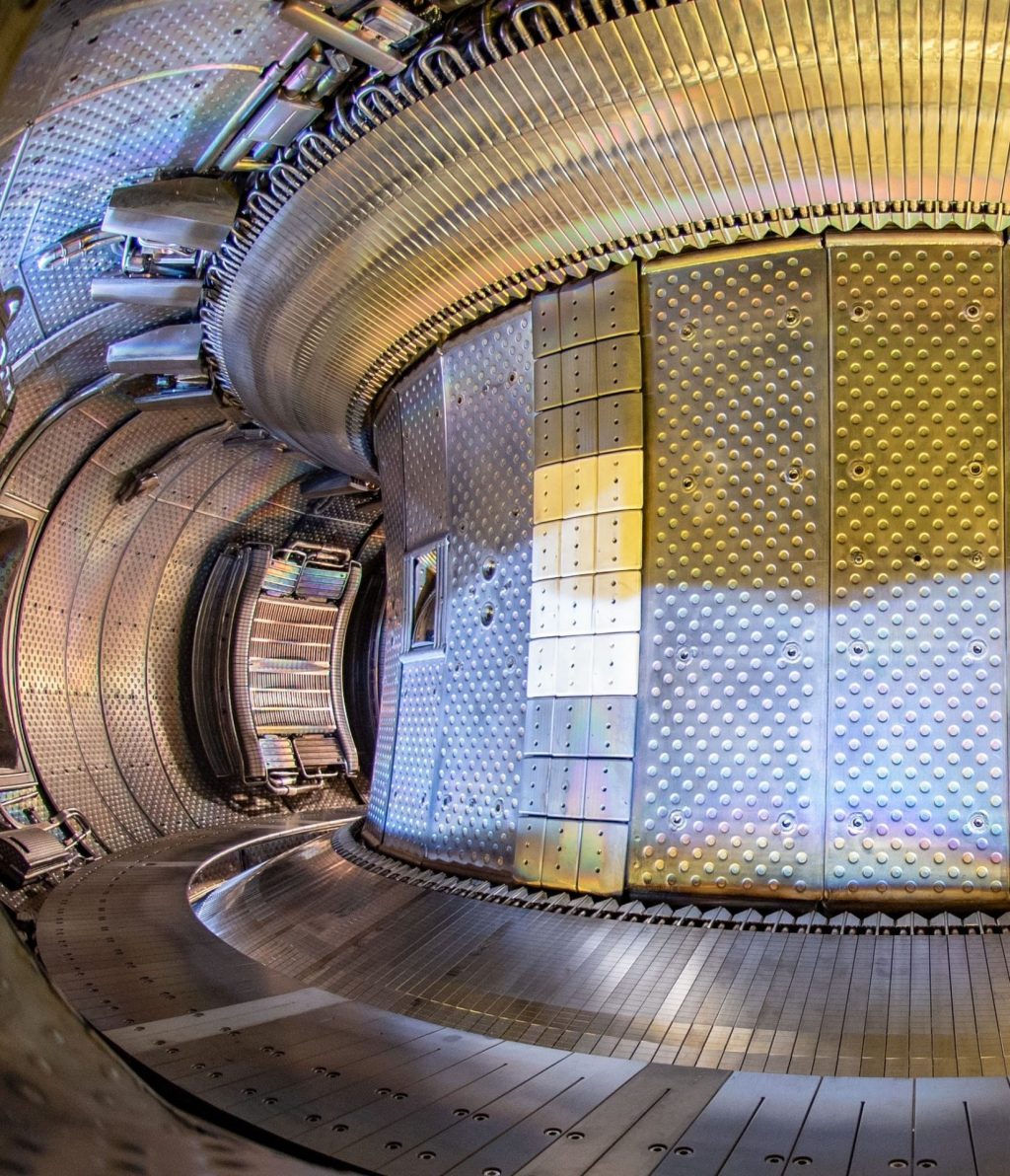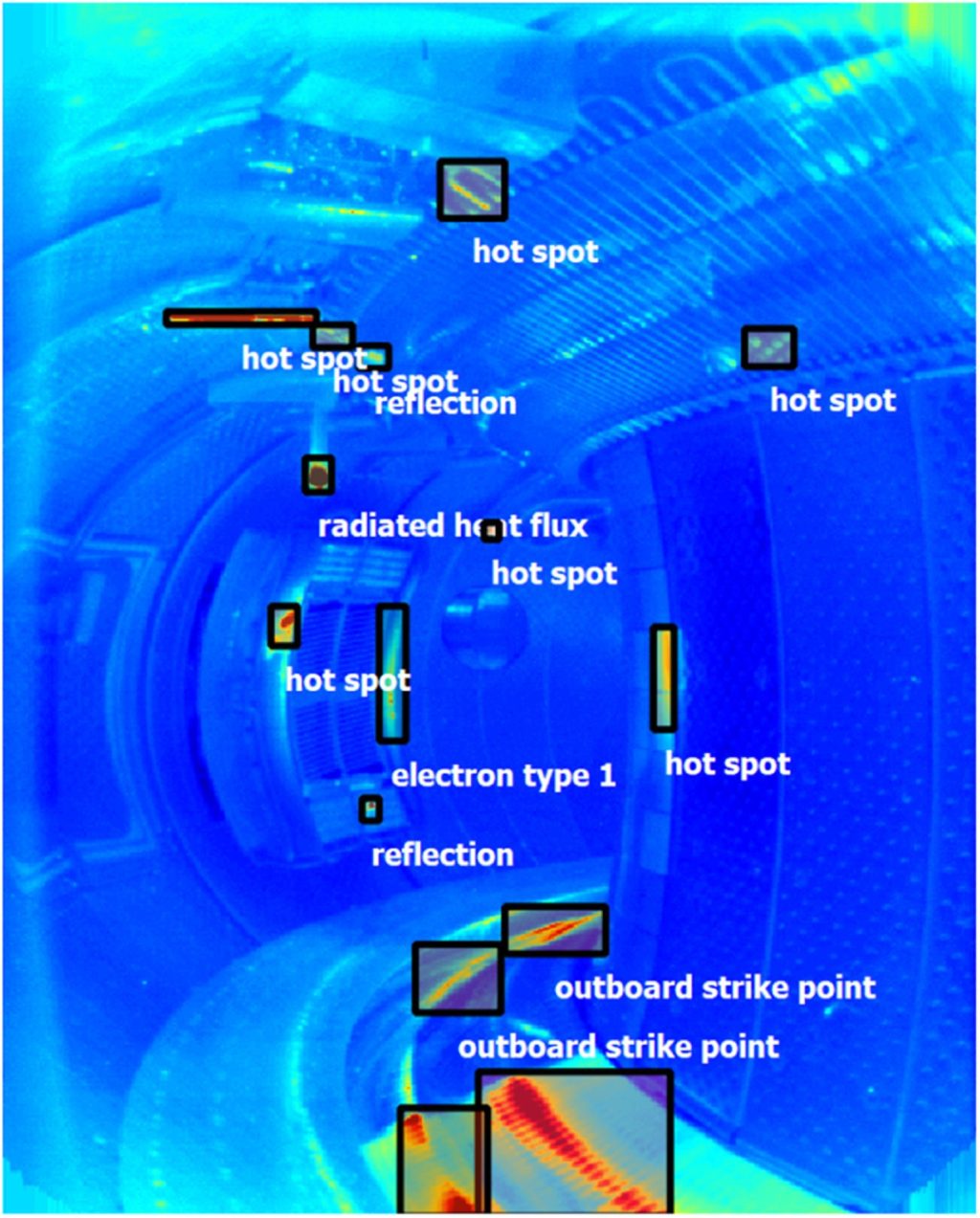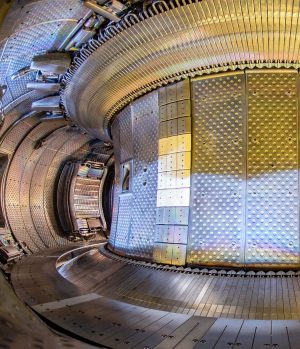The plasma-facing walls of magnetic confinement fusion facilities receive intense heat fluxes that can easily exceed their extraction capacities, and ultimately damage them. Protecting the wall in real time is key to the operation of these facilities. On its WEST tokamak, the CEA is developing a system for the automated detection and identification of wall hot spots using Artificial Intelligence (AI) with the aim to protect the plasma walls.
The plasma-facing walls are made with centimetric thickness components consisting of an assembly of a refractory material (generally tungsten) on a structural material with high thermal conductivity (generally a copper alloy) cooled by pressurised water. These advanced components allow long-duration plasma pulses. These components are used close to their technological limits. The aim of the protection systems is to prevent these components from damage while allowing the safe operation within of the installation’s operational domain.
The Institute for Magnetic Confinement Fusion Research (IRFM) at CEA has implemented a system on its WEST tokamak that combines infrared-based thermal instrumentation, heat transfer modeling, along with signal processing and inclusion of plasma-wall interaction physics laws into the protection system. This system ensures optimized and controlled protection of components in this metallic environment.

Protecting the wall requires a fast response while managing large quantities of data. This involves reacting in real time, in a few tens of milliseconds, to the analysis of the infrared cameras monitoring the wall (12 cameras are currently installed on WEST). Based on this analysis, a mitigation strategy can be triggered, such as reducing or stopping the plasma heating power, and afterwards, it can be decided to move the plasma away from the wall or to inject impurities into the plasma to cool it.
Today, the IRFM is developing and installing advanced methods combining the expertise and knowledge acquired with artificial intelligence techniques, namely the Faster R-CNN model, a model based on convolutional neural networks [1]. Using annotation databases created by wall surveillance experts and machine learning techniques, these methods detect and identify events in thermal scenes of infrared films, enabling them to be classified in terms of risk level. In parallel, multimodal approaches are being studied, making it possible to exploit the entire mass of data produced (infrared films, temporal data from other sensors), as well as methods injecting a priori physical knowledge into models to better characterise certain types of heat deposit, for example thanks to a Max-Tree type decomposition to classify anomalies [2].
A first demonstration of the capabilities of these techniques was carried out this year, delayed, on the last WEST campaign, showing an exceptional ability to detect and recognise events, accessible to experts a few minutes after each experiment. This technique will be tested in real time during the next experimental campaign, scheduled for the end of 2023, and opens up promising prospects for the future operation of ITER.

[1] E. GRELIER et al., Fusion Eng. Des. 192 (2023) 113636
[2] V. GORSE et al., Rev. Of Scientific Instruments, Vol. 94, Issue 8 (2023)


